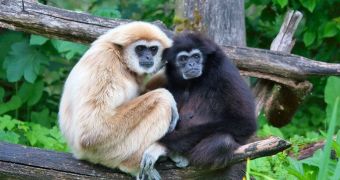According to a new scientific study, it would appear that placental mammals have larger brain sizes because their parents employ useful strategies that promote this growth.
Researchers tried to find a connection between body size and brain size, but they only manged to do so for placental mammals. This is very peculiar, because this doesn't make sense from an evolutionary standpoint.
According to predictions, only animals with fast metabolisms should be able to support a large brain. This is because running such a large construct requires massive amounts of energy.
Larger animals, which feature a slower metabolism, generally cannot support a very large and complex brain, unless they spend their entire day eating.
But apes and primates are perfectly capable of doing this, exhibiting large brains and rather slow metabolisms. The same holds true for other placental mammals as well.
Researchers at the University of Cambridge and the University College London (UCL) say that humans apes and monkeys should basically be grateful to their mothers for their large, complex brains.
The team took a close look at 197 species of marsupials and 457 species of placental mammals, in an attempt to determine how large brain sizes become possible.
The research group was led by UC expert Vera Weisbecker and UCL scientist Anjali Goswami, NewScientist reports.
“Placental babies are connected to their mothers via the placenta for a long time. So if she has a high metabolic rate, the baby is more likely to benefit,” Weisbecker explains.
On the other hand, offspring of marsupial species are not that lucky. They are born when very small, and then need to grow their brains by feeding off their mothers' milk.
This is nowhere nearly as effective in promoting brain growth as developing inside the womb, where placentas provide large amounts of nutrients in a steady flow.
Oddly enough, the team reports no major size differences between the brains of marsupials and placental animals, if they take primates out of the equation.
This particular class of species, of which we are a part as well, is extremely lucky to be able to develop such impressively large brains.
This ability comes from their mothers, which provide nutrients during gestation, and also milk for months – and in some cases even years – after birth.
As a direct consequence, the brain continues to develop, and reaches proportions that should theoretically be impossible given our metabolic rates.

 14 DAY TRIAL //
14 DAY TRIAL //